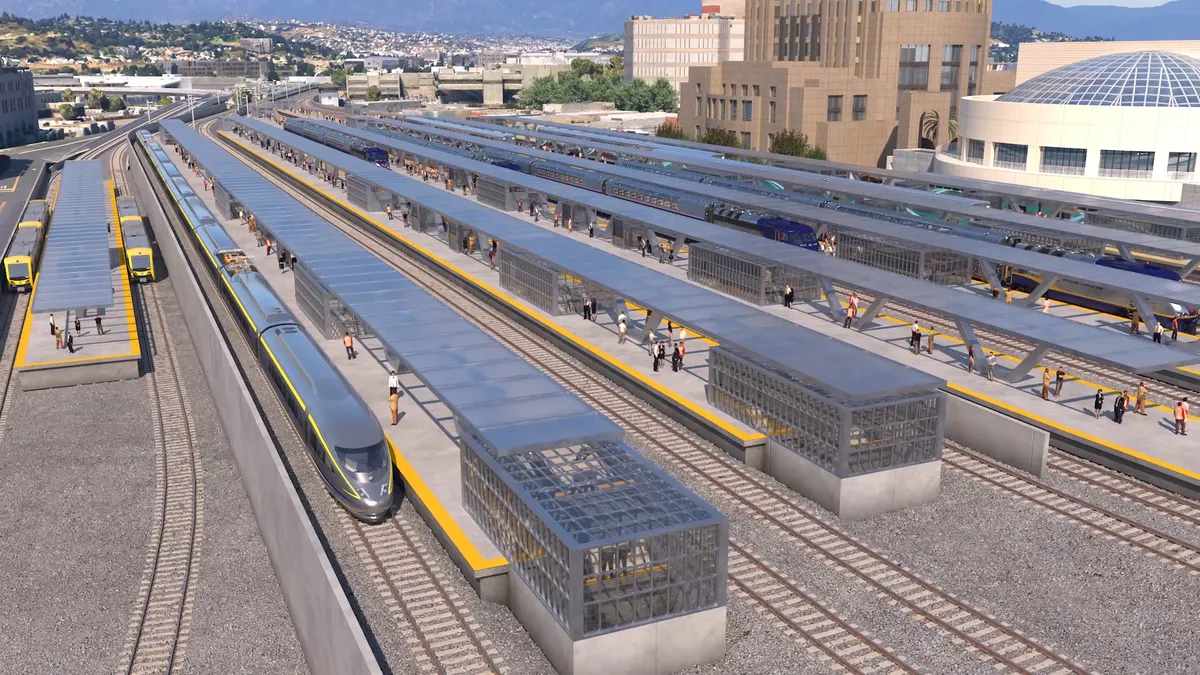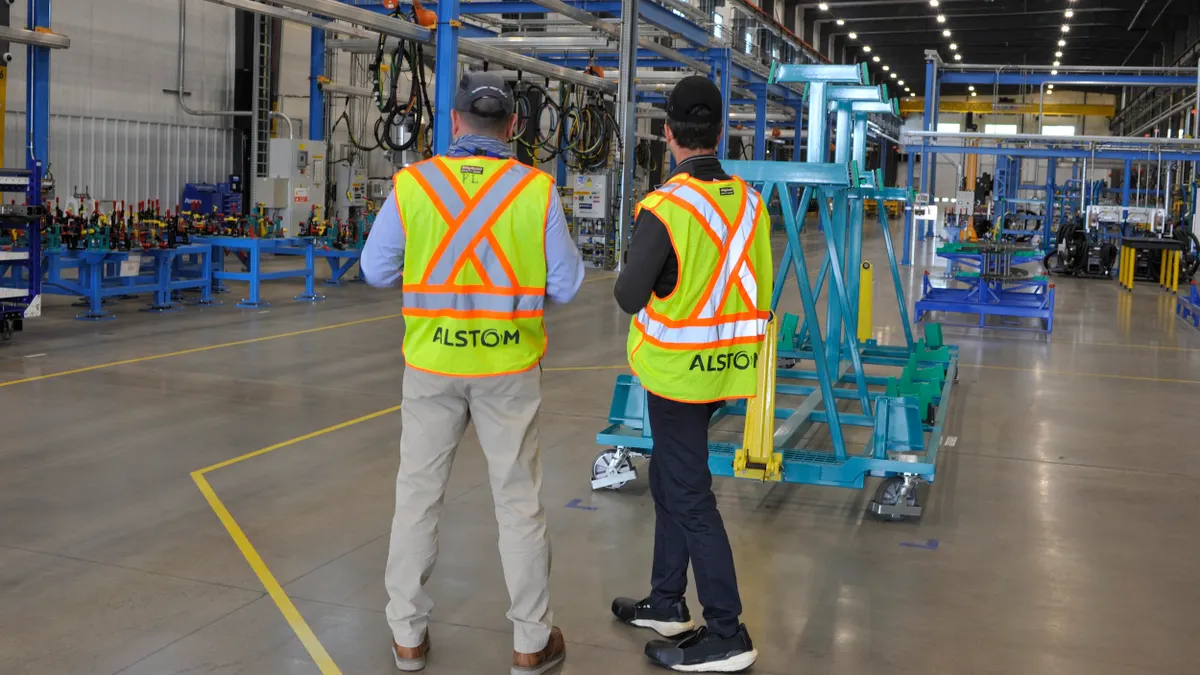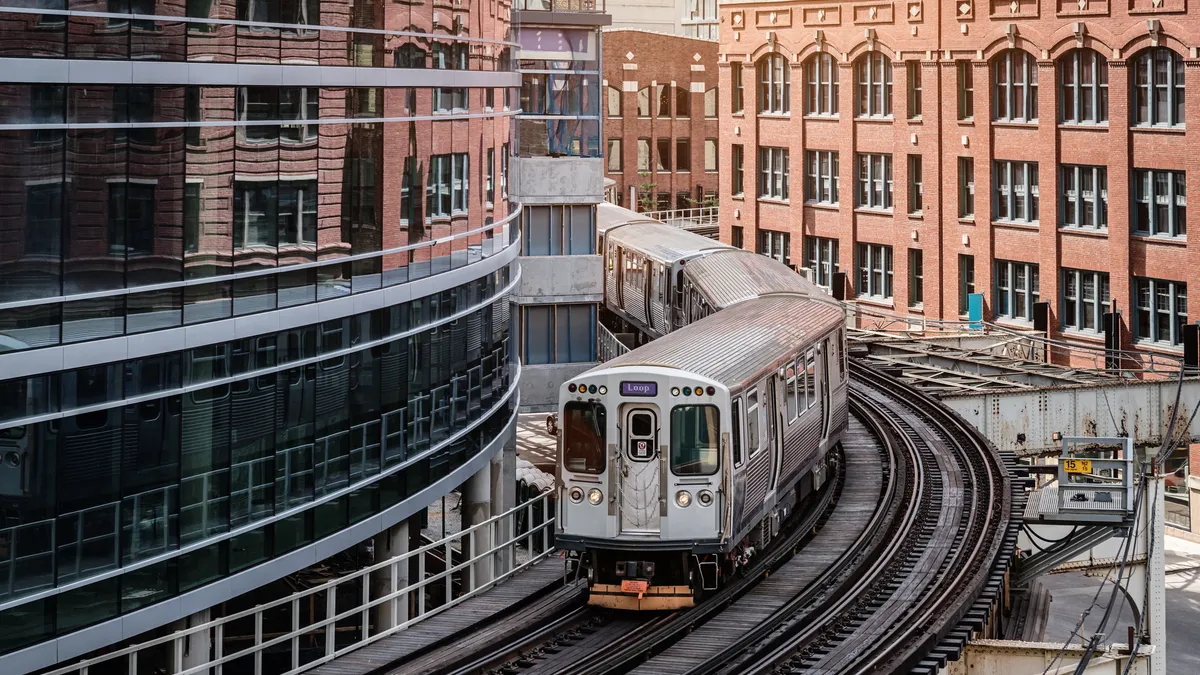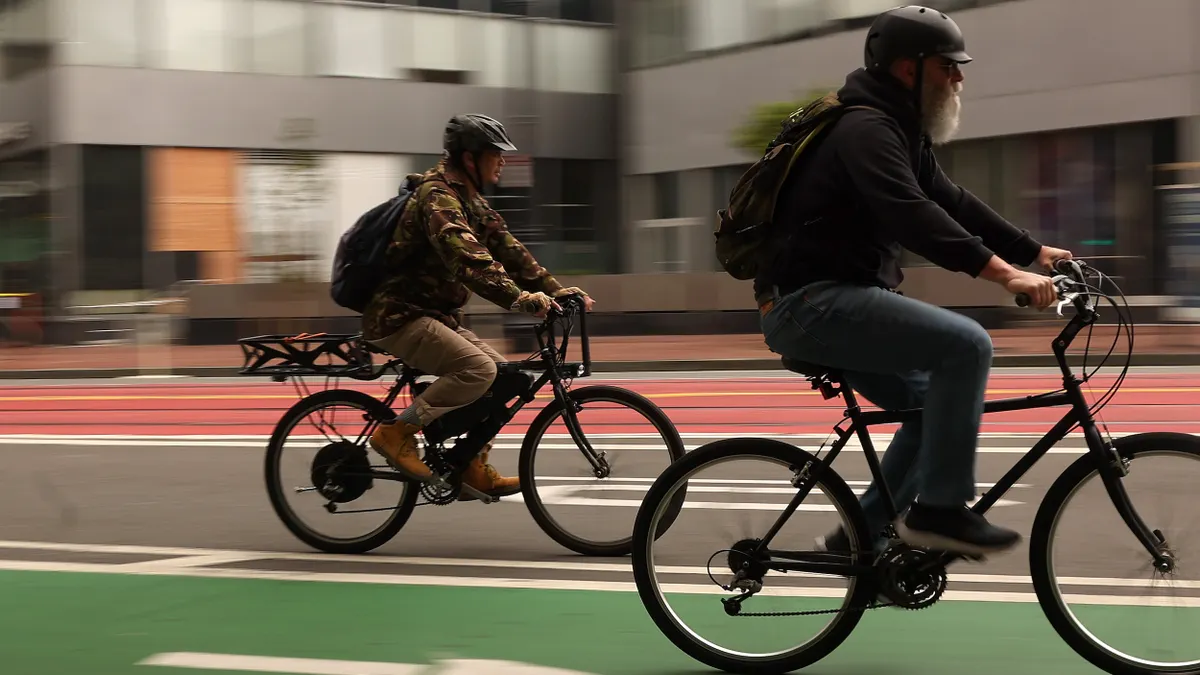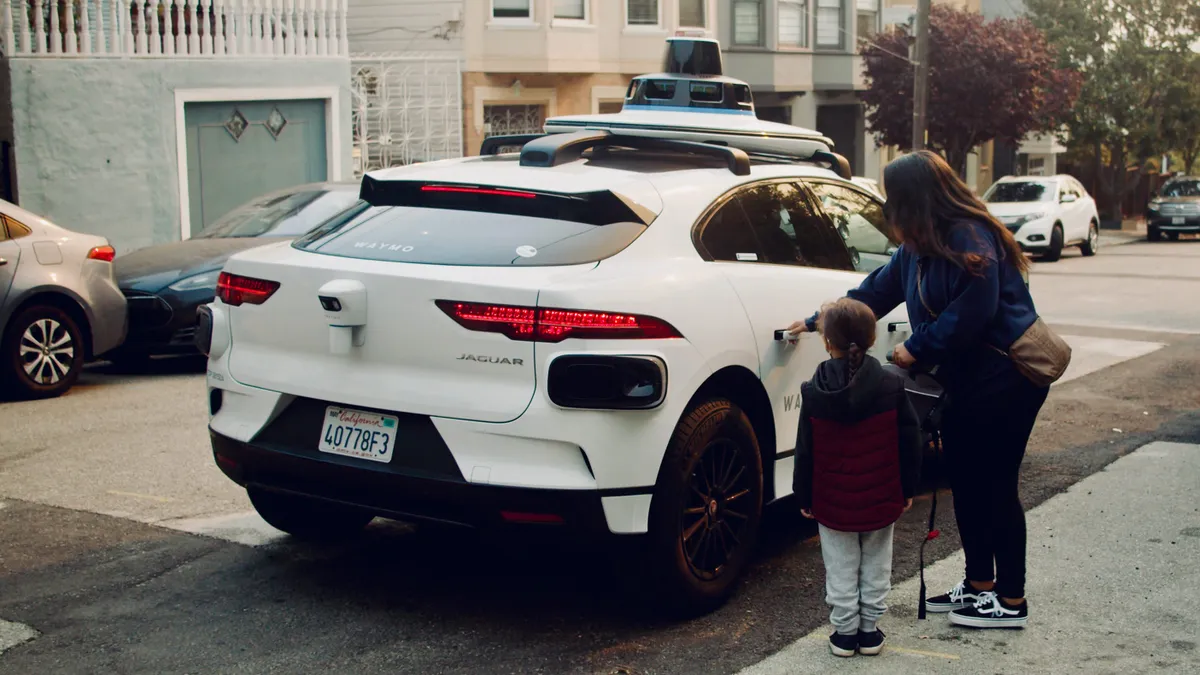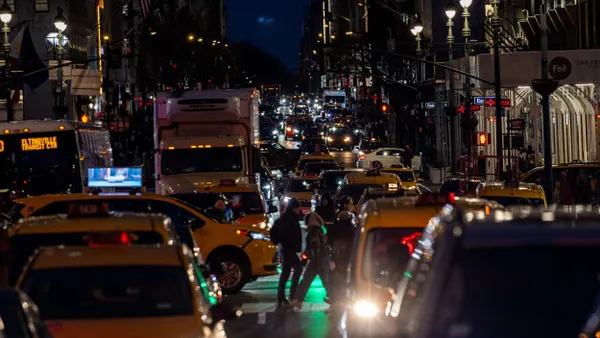Editor's Note: This piece was written by Barry Einsig, global automotive and transportation executive at Cisco. The opinions represented in this piece are independent of Smart Cities Dive's views.
Cities of all sizes are racing to create smarter, more connected transportation systems. Through greater digitization and connectivity, cities can enjoy faster, more efficient traffic management, timelier infrastructure repairs, improved traffic flow and road safety, and even reduce CO2 emissions. However, some cities are already making major moves — and setting the bar for other municipalities to follow.
Examples of cities paving the way to connected transportation
With goals of becoming one of the nation’s most digitally connected cities and attracting more people to its downtown businesses, Kansas City recently converted a 2.2-mile corridor in the heart of its downtown into a smart district. Among other innovative improvements to transportation, it features a new, Wi-Fi enabled streetcar that transports as many as 6,600 riders for free each day; smart streetlights that automatically dim if there is no pedestrian foot traffic beneath them; and digital kiosks that help people navigate the area and find available parking spaces.
Internet of Things (IoT)-enabled sensors along the streetcar line and in the road provide real-time data, so anyone can go online and view visualizations of the current traffic flows, level of congestion, available parking spaces and even precisely where the streetcar is at any given time.
The real-time information makes it easier for people to navigate the downtown and reduces congestion as drivers can take alternate routes and no longer need to circle around to look for parking. Furthermore, the data generated from the district’s numerous sensors and from people’s smartphones as they access the free public Wi-Fi will enable the city to make better decisions and save money through more efficient repairs and maintenance the streets. Ultimately, this all helps improve the way people experience Kansas City, from the flow of traffic to better city services, to more free public Wi-Fi.
Las Vegas is another great example of a city that is leading the way in connected transportation. The city recently launched a new initiative designed to alleviate congestion caused by tourism and the more than 22,000 special events the city hosts annually. With IoT-enabled traffic lights, video cameras and data analytics, all tied to a common, converged network, the city of Las Vegas will be able to reroute vehicles, improve the efficiency of traffic lights and increase safety as people move from place to place.
For example, sensors will provide city officials a better understanding of the density of both vehicle and foot traffic, such as knowing how many vehicles pass through each intersection and where pedestrians are most likely to jaywalk to cross the street. New, adaptive traffic signals leverage sensors, vehicle-to-infrastructure (V2I) communication, cameras and data analytics to recognize if there is only one vehicle at an intersection and automatically change the timing of the signal. Drivers will no longer find themselves stuck waiting at a red light in the middle of the night when there is no other traffic around. The same traffic analytic cameras and sensors can be used to look at an intersection and see if someone who needs extra time getting across the roadway is in danger, enabling city officials to be more proactive concerning potential safety risks rather than reactionary.
Columbus, OH, which beat out 78 other cities to win the Department of Transportation’s Smart City Challenge, plans to use the $50 million grant it won to create a new central connected traffic signal and integrated transportation data system. Leveraging this integrated transportation data system, they aim to build applications that will streamline multi-modal trip planning, provide a common payment system for all transportation modes, create a smartphone application to assist persons with disabilities, and integrate travel options at key locations for visitors.
Columbus also plans to establish a smart corridor to improve first-mile and last-mile transit service in order to better connect underserved neighborhoods to jobs and services. The smart corridor will enhance Bus Rapid Transit (BRT) service by installing smart traffic signals, smart street lighting, traveler information and payment kiosks and free public Wi-Fi along the route. Furthermore, six electric, accessible, autonomous vehicles will be deployed to expand the reach of the BRT system to additional retail and employment centers.
Getting started with lessons learned from early adopters
Lesson 1: Identify your city’s unique needs
Different cities, states and local municipalities will have different needs and goals when it comes to digitizing their transportation systems. Therefore, no one approach can be considered a panacea for all cities. For example, cities that only became major cities within the last 25 years, such as Dallas or Denver, tend to be more car-centric. They have sprawling road systems and are plagued with traffic congestion. These types of sprawling cities can benefit from using smart sensors on roadways to reduce congestion and aid in clearing traffic jams faster, or even prevent them before they occur. In contrast, older, denser cities such as New York have more mass transit systems and people tend to travel mostly within the city center. These types of denser cities can benefit from creating more mobility-as-a-service transportation options and with a seamless, unified platform across multiple modes of public transportation.
Transportation officials should ask themselves which fundamental problems they’re looking to solve, and then prioritize those. While it can be tempting for city officials to want to green-light projects that seems glamorous or will provide quick results, those often won’t solve long-standing challenges in transportation or serve the community in the way it should be served. Instead, officials should look to identify and prioritize initiatives that align with their core mission to increase the safety, efficiency and mobility of transportation.
Lesson 2: Don’t let fear of failure hold you back
One of the biggest obstacles holding cities back from launching connected transportation initiatives is the fear of failure. However, this fear is often misplaced. New technologies developed for smart transportation are specifically designed, tested and validated with a safety-first mentality. These safety-first processes include design documentation, implementation guides, and best practice sharing from other governments with a similar problem set.
Additionally, by using reference frameworks such as the Department of Transportation’s reference designs for connected and automated vehicle systems, cities can rest assured that they are using proven, standardized technologies and approaches that have been successful elsewhere. They can also follow the best practices and lessons learned from the DOT’s Smart Cities Challenge, to understand how other cities their same size that have overcome similar challenges.
Lesson 3: Focus on broad scale deployment
A common mistake that some cities make when planning a connected transportation initiative is to place their sole focus on the deployment of self-driving or autonomous vehicles. However, local governments should not place all their eggs in one basket because they have no control over consumer adoption of personal vehicles and no real way of incentivizing it. Instead, they should focus on strategies such as integrating IoT-enabled devices into their existing city infrastructure and public transit systems.
One such initiative that is beneficial for many cities is traffic signal preemption. By connecting traffic signals and emergency response vehicles with the IoT-enabled sensors and exchanging real-time data, cities can prioritize emergency responders and police, allowing them to preempt the traffic signals and arrive on scene faster. Doing this on a common, converged IP infrastructure and using standards-based dedicated short-range communications (DSRC) enables the city to reuse this architecture for many other applications with reduced incremental cost. This can yield enormous value through not only increasing safety, but also by unlocking new data sets.
Cities of all sizes have started to recognize the benefits of connected transportation, but each one will have a different experience. As long as local officials can identify and prioritize the initiatives that best fit their unique needs, overcome fear of failure and embrace broad scale deployments, they will be able to enjoy faster, more efficient public transportation systems, reduced vehicle congestion, increased safety and many other benefits.







